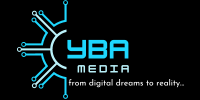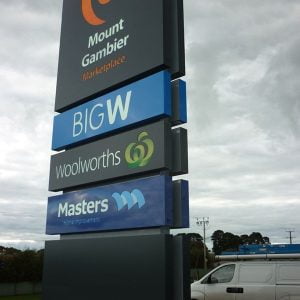- +256 781233665
- [email protected]
- Shop A-24, University Plaza
Brand identity design in Uganda
5.00 out of 5 based on 1 customer rating
Product Highlights
Trends in Brand Identity Design
- Minimalism: Simple, clean designs that focus on essential elements for a modern and timeless look.
- Responsive Logos: Logos that adapt to different screen sizes and formats for better versatility.
- Custom Illustrations: Unique, hand-drawn illustrations that add personality and distinction to the brand.
- Bold Typography: Use of striking, custom fonts to make a strong visual impact.
- Sustainability: Incorporation of eco-friendly and socially responsible elements into the brand identity.
Description
Best Brand identity design in Uganda
Brand identity design in Uganda is a crucial aspect of building a strong and recognizable brand. It involves creating a cohesive and distinctive visual and conceptual representation of a brand that resonates with its target audience. Here’s an overview of what brand identity design entails, why it’s important, and how to approach it:
What is Brand Identity Design?
Brand identity design is the process of creating visual and conceptual elements that represent a brand’s values, personality, and mission. It includes:
- Logo Design: The central visual symbol of the brand. It should be memorable, versatile, and reflective of the brand’s essence.
- Color Palette: A set of colors used consistently across all brand materials. Colors evoke emotions and help in brand recognition.
- Typography: The selection of fonts and typefaces used in branding materials. Typography should be readable and aligned with the brand’s personality.
- Imagery: The style and type of images used in marketing and branding materials. This includes photography, illustrations, and icons.
- Brand Voice and Messaging: The tone, language, and style used in all brand communications. It should reflect the brand’s personality and values.
- Brand Guidelines: A comprehensive document that outlines how to use the brand’s visual and verbal elements consistently across different platforms and media.
Importance of Brand Identity Design
- Recognition and Recall: A strong brand identity helps customers easily recognize and remember your brand, which is essential for building brand loyalty.
- Consistency: Consistent use of brand elements across all touchpoints reinforces brand recognition and credibility.
- Differentiation: A well-designed brand identity sets your brand apart from competitors and communicates what makes your brand unique.
- Trust and Professionalism: A professional and cohesive brand identity enhances your brand’s credibility and can build trust with your audience.
- Emotional Connection: Effective brand identity design can create an emotional connection with your audience, influencing their perceptions and loyalty.
Key Components of Brand identity design in Uganda
- Logo:
- The face of your brand, representing its core values and making a memorable impression.
- Color Palette:
- A carefully chosen set of colors that reflect the brand’s personality and are used consistently in all branding materials.
- Typography:
- Specific fonts and typefaces that convey the brand’s tone and are used consistently in all communications.
- Imagery and Graphics:
- The style of images, illustrations, and graphics that align with the brand’s visual language.
- Brand Voice:
- The tone, style, and messaging used in all brand communications to convey the brand’s personality and values.
- Brand Guidelines:
- A detailed document that provides rules and guidelines on how to use brand elements consistently and correctly.
Steps to Creating a Brand Identity
- Research and Discovery:
- Understand your brand’s mission, values, target audience, and competitive landscape. Conduct market research to inform the design process.
- Define Brand Positioning:
- Establish how you want your brand to be perceived in the market. This includes defining your brand’s unique selling points and positioning.
- Develop Brand Elements:
- Create the core visual elements, including the logo, color palette, typography, and imagery. Ensure they align with the brand’s values and positioning.
- Design Brand Guidelines:
- Develop a comprehensive set of guidelines that detail how to use brand elements consistently across different platforms and materials.
- Implement and Monitor:
- Apply the brand identity across all touchpoints, including your website, social media, marketing materials, and physical locations. Monitor its effectiveness and make adjustments as needed.
Choosing a Brand Identity Designer
When selecting a designer or agency for brand identity design:
- Portfolio: Review their previous work to ensure their design style aligns with your vision.
- Experience: Look for designers with experience in creating brand identities for businesses similar to yours.
- Process: Understand their design process and how they incorporate client feedback and revisions.
- Client Reviews: Check testimonials or reviews from previous clients to gauge their satisfaction and the designer’s reliability.
- Budget: Discuss your budget upfront and ensure it aligns with the scope of work and expected deliverables.
Trends in Brand Identity Design
- Minimalism: Simple, clean designs that focus on essential elements for a modern and timeless look.
- Responsive Logos: Logos that adapt to different screen sizes and formats for better versatility.
- Custom Illustrations: Unique, hand-drawn illustrations that add personality and distinction to the brand.
- Bold Typography: Use of striking, custom fonts to make a strong visual impact.
- Sustainability: Incorporation of eco-friendly and socially responsible elements into the brand identity.
Getting Started
To get started with brand identity design:
- Define Your Brand: Clearly articulate your brand’s mission, values, and target audience.
- Choose a Designer: Find a designer or agency that understands your vision and has a strong portfolio.
- Collaborate: Work closely with the designer to ensure the final brand identity aligns with your expectations and goals.
- Apply Consistently: Implement the brand identity across all platforms and materials for a cohesive brand presence.
Effective brand identity design is essential for creating a strong, memorable, and impactful brand. It helps in establishing a clear and consistent image that resonates with your audience and supports your business goals
Tags: brand consulting, brand development, brand identity design, brand management, brand positioning, brand strategy, branding services, corporate branding, logo design services, personal branding, rebranding services
1 review for Brand identity design in Uganda
Add a review Cancel reply
- 3D Logo Designs In Kampala, 3D Printing Services in Kampala, 3D Signage In Uganda, Branding Services In Uganda, Graphics Designing In Kampala, Logo Design Company in Kampala, Logo Designer In Uganda, Printing Services In Kampala, Pylon Signs In Uganda, Signage Designer In Uganda, Uganda Logo Design Company
3D Road Signs in Kampala
- 3D Printing Services in Kampala, Banner Printing In Uganda, Books Printing & Publishing, Brochure Printing, Business Card Printing, Digital Printing, Flyers & Brochure Printing, Large Format Printing In Kampala, Magazine Printing In Uganda, Printing Services In Kampala, Stickers Printing In Kampala, T- Shirt Printing In Uganda, Teardrop Banner Printing Services in Uganda, UV Printing In Uganda
Bulk T-Shirt Printing In Uganda
For unbeatable prices, quality, and customer service, trust Cybamedia for all your bulk T-shirt printing needs in Uganda - 3D Logo Designs In Kampala, 3D Printing Services in Kampala, 3D Signage In Uganda, Branded Safety Wear In Kampala, Branding Services In Uganda, Logo Design Company in Kampala, Logo Designer In Uganda, Printing Services In Kampala, Promotional Items, Pylon Signs In Uganda, Signage Designer In Uganda, Uganda Logo Design Company
Vehicle branding services In Kampala
Vehicle branding is a dynamic and effective way to market your business in Kampala. By turning your vehicles into mobile… - Digital Marketing In Kampala, search engine optimisation in uganda, SEO Services in Uganda, Website Designer In Kampala
Affiliate Marketing Services In Uganda
Contact us today at [email protected] or visit our website at cybamedia.com to learn more about our affiliate marketing services and…UGX400,000 - 3D Logo Designs In Kampala, 3D Printing Services in Kampala, 3D Signage In Uganda, Bank Signages In Uganda, Bar & Lounge Signages in Kampala, Boutique Sign Boards In Kampala, Branded Safety Wear In Kampala, Branding Services In Uganda, Business Sign Posts In Kampala, Graphics Designing In Kampala, Hospital Sign Posts In Uganda, Hotel Signages In Uganda, Logo Design Company in Kampala, Logo Designer In Uganda, Petrol Stations Signages in Uganda, Pharmacy Sign Posts In Uganda, Pylon Signs In Uganda, Road Sign Posts In Uganda, School Sign Posts In Kampala, School Signage In Uganda, Signage Designer In Uganda, Uganda Logo Design Company
Karuma 3D Wall Signage
Karuma 3D wall signage is an exceptional way to elevate the visual identity of your business or institution. These stunning… E-Commerce Seo In Uganda
Ready to take your online store to the next level? Partner with Cybamedia, the trusted name for e-commerce SEO in…UGX800,000













Sakwa Abdul –
I’m really impressed with the quality of the signage. The acrylic feels sturdy and durable, and the finish is smooth and polished. After several months, it still looks as good as new, even in outdoor conditions. I can tell this will last a long time without fading or scratching easily.